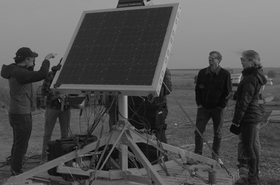UK telecom firm BT Group is considering expanding into Edge computing services and monetizing its existing tower and telephone exchange portfolio.
Speaking to TelcoTitans, BT’s specialist tower division director, David McKean, said the operator was investigating how adapting its existing estate could unlock new relationships with enterprise and government clients, and support its ambitions around Edge services.
He told the publication the plan could take in certain assets within the BT tower portfolio, encompassing thousands of sites across the UK - as well as a number of the 1,000 telephone exchanges the company will retain after decommissioning its legacy copper network.
The operator has been considering “whether we can repurpose some of those enduring exchanges for data center use,” McKean said.
In the UK, the country’s copper network telephone exchanges (also known as Central Offices) all belong to BT and its subsidiary Openreach. The companies are also in the midst of a large fiber rollout and planned retirement of the incumbent’s old copper networks.
Openreach currently operates some 5,600 BT-owned exchanges; most of those are for copper and other legacy services, with the company operating its fiber service from around 1,000 newer exchanges, known as Openreach Handover Points (OHPs).
In 2023, Openreach said it aims to close 103 legacy exchanges by December 2030, starting with a trial of five sites.
The company is in discussions with communications providers including BT, Sky, Vodafone, and others over closing the other 4,600 exchanges the company has across the UK in the 2030s.
BT Group owns at least 200 radio masts and towers in Britain – more than a dozen of which are large concrete towers. The most famous is the iconic BT Tower in London, which is being sold and turned into a hotel.
Several European operators including CRA in Czechia, Digita in Finland, Telecentras in Lithuania, LVRTC in Latvia, HKBN in Hong Kong, and Cellnex in the Netherlands have deployed data centers at TV and radio tower sites.
The group’s total cell tower footprint, used by its EE unit, is unclear. The company said EE’s 3G switch-off involved retiring technology at more than 18,000 mobile sites, with more being rolled out to support the group’s 4G and 5G network.
Edge data centers at cell tower sites are more common. The likes of Cellnex, American Tower, and SBA have deployed data centers of varying sizes at cell sites.
Repurposing copper telephone exchanges for modern colocation uses is also becoming more common. Telecoms consultancy firm STL Partners predicts there will be as many as 1,800 “network Edge” data centers globally by 2028 – up from just over 800 today.
Verizon has spoken of the potential of its existing assets to serve AI customers, and the potential to develop more modern facilities at many of its legacy locations. Frontier, in the process of being acquired by Verizon. offers what it calls ‘Edge Colocation’ at more than 2,500 locations, including its Central Offices. Brightspeed, formed out of legacy Lumen assets, offers colocation from its sites across the Midwest and Southeast US.
In the US, fiber provider Ziply is converting more than 200 former telephone exchanges for retail colocation use. We explored Ziply’s ambitions in our latest edition of DCD>Magazine.







